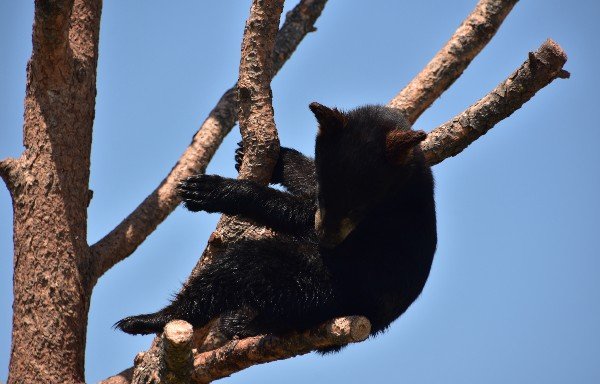With the approaching winter, you may be looking forward to ice-skating, hot chocolate, knitted scarves, snowball fights, and gift-giving. Or you might be dreading scraping off your car in the morning before work. Either way, you have a pretty good idea of how you will spend your winter months. But what about bears? Do you know how these famous animals will spend the season?
Hibernation…?
Thanks to decades of cartoons and movies, we all think of bears as soon as we hear “hibernation.” However, there is a large debate in the scientific community as to whether or not bears truly hibernate. Some scientists rule bears out of the hibernating community because they do not drop their body temperature as dramatically as other hibernators, like ground squirrels, whose body temperature lingers just above the freezing point all winter. On the other hand, other experts, like Brian Barnes (director of the Institute of Arctic Biology at the University of Alaska Fairbanks) believe bears to be “the best hibernators” because “their body is a closed system. They can get through winter with only oxygen—it’s all they need.” Whether or not bears are true hibernating animals, their winter lives are much different than our own.
A Closer Look at a Bear’s Winter
So the title of hibernator is up for debate, but the winter habits of a bear are no less impressive. When the weather turns colder, bears begin a denning period. This means they hole up in a secluded den to wait out the season. Depending on the region, bears will remain in their den for up to seven months out of the year. Most of the bears and wildlife around Yellowstone hide away for five.
They spend much of this time sleeping, which is how they became famous for hibernating. A bear cuts its metabolic rate by 50-60% so it can consume excess body fat slowly for sustenance. In fact, over the course of the season, it may lose up to 30% of its body weight. In addition to their metabolic rate, bears also drop their breathing and heart rate to one breath every 45 seconds and 8-19 beats every minute. Considering the normal rates are 6-10 breaths and 40-50 beats per minute, this decrease is amazing.
Because bears are so big and well insulated compared to other Yellowstone wildlife, they can more easily keep themselves warm in the winter, so they only slightly drop their body temperature while denning. Because they maintain a higher temperature, they can wake up more quickly and easily than other hibernators that need several hours to thaw. Let this be a caution to you hikers and campers! Sleeping bears may not be as difficult to stir as you think.
Smaller Yellowstone wildlife that hibernate typically need to wake up a couple times every week to maintain a healthy body temperature, pass waste, and eat a little food. Bears, on the other hand, can sleep for months without waking up for food or a bathroom break. They recycle their own waste instead of shedding it. The resulting nitrogen is used to build protein in the bear’s body. Imagine how much time you could save if your body functioned like a bear’s during hibernation.
You can learn more about the secret winter life of bears, and even see them alongside other wildlife at Yellowstone Bear World. Be sure to bring your hot chocolate and knitted scarves.





